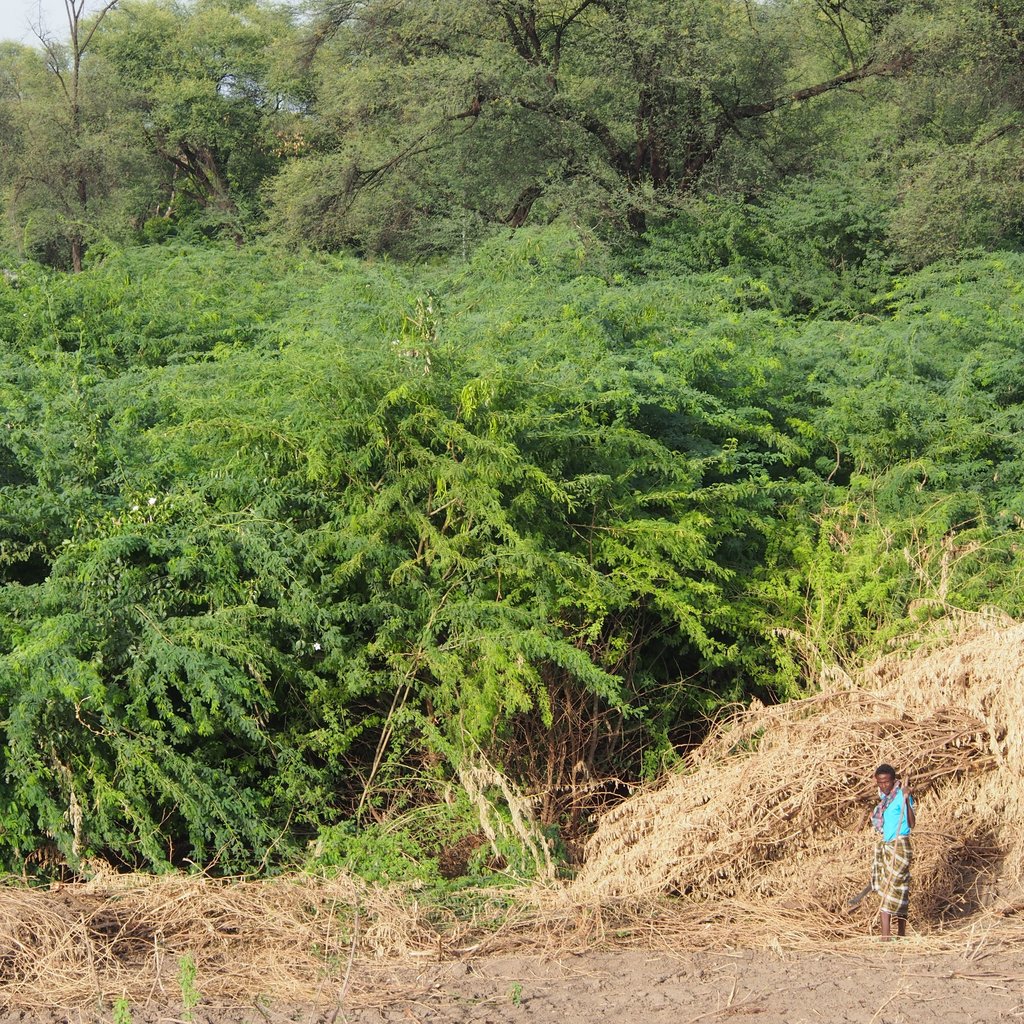Woody Weeds +
What do we see on the project photo?
The photo shows an invasion of the non-native tree Prosopis juliflora (green layer under the tall native trees) along a river in East Africa. Within 30 years, this tree has invaded 10 million ha of land in East Africa.
How would you explain to a child what the project is doing?
In Africa, humans planted many tree species from other parts of the world to increase the availability of wood and of fodder for animals. Some of these tree species, such as Prosopis, started to spread soon after their introduction and now cause big problems for nature and those living rurally. This project supports institutions in Kenya to implement a strategy to reduce the density and further spread of Prosopis.
What has been the most positive moment during the project?
We organised workshops with people affected by the growth of this tree, as well as people benefiting from it (e.g. charcoal producers). At the end of these meetings, all participants agreed on a jointly developed management plan. This shows that people with different perspectives and different motivations can agree on common land-management strategies.
What have been the biggest challenges encountered in the project?
The biggest challenge is the management of the tree itself. Studies in Africa and elsewhere have shown that the use of specialist natural enemies, a method called ‘biological control’, is key for the sustainable management of problematic non-native tree species like Prosopis. However, very few countries in Africa have established the policy and practical requirements for implementing biological control.
Which is the most important lesson learnt from the project?
Many people argue that because it is not possible to eradicate an invasive tree like Prosopis from Kenya that it should just be utilised. The discussions and the narratives started to change when we proposed a spatial approach to Prosopis management, as everyone agreed that the further spread of Prosopis should be prevented. The key lesson learned is that people understand and commit themselves more quickly to spatial land-management strategies, e.g. at the level of landscapes.
About the project
Title:
Woody Weeds +
Contact:
Urs Schaffner, CABI Switzerland
Duration:
36 months
Funding institutions:
Swiss Agency for Development and Cooperation
Implementing institution:
CABI
Links to further information:
www.woodyweeds.org

